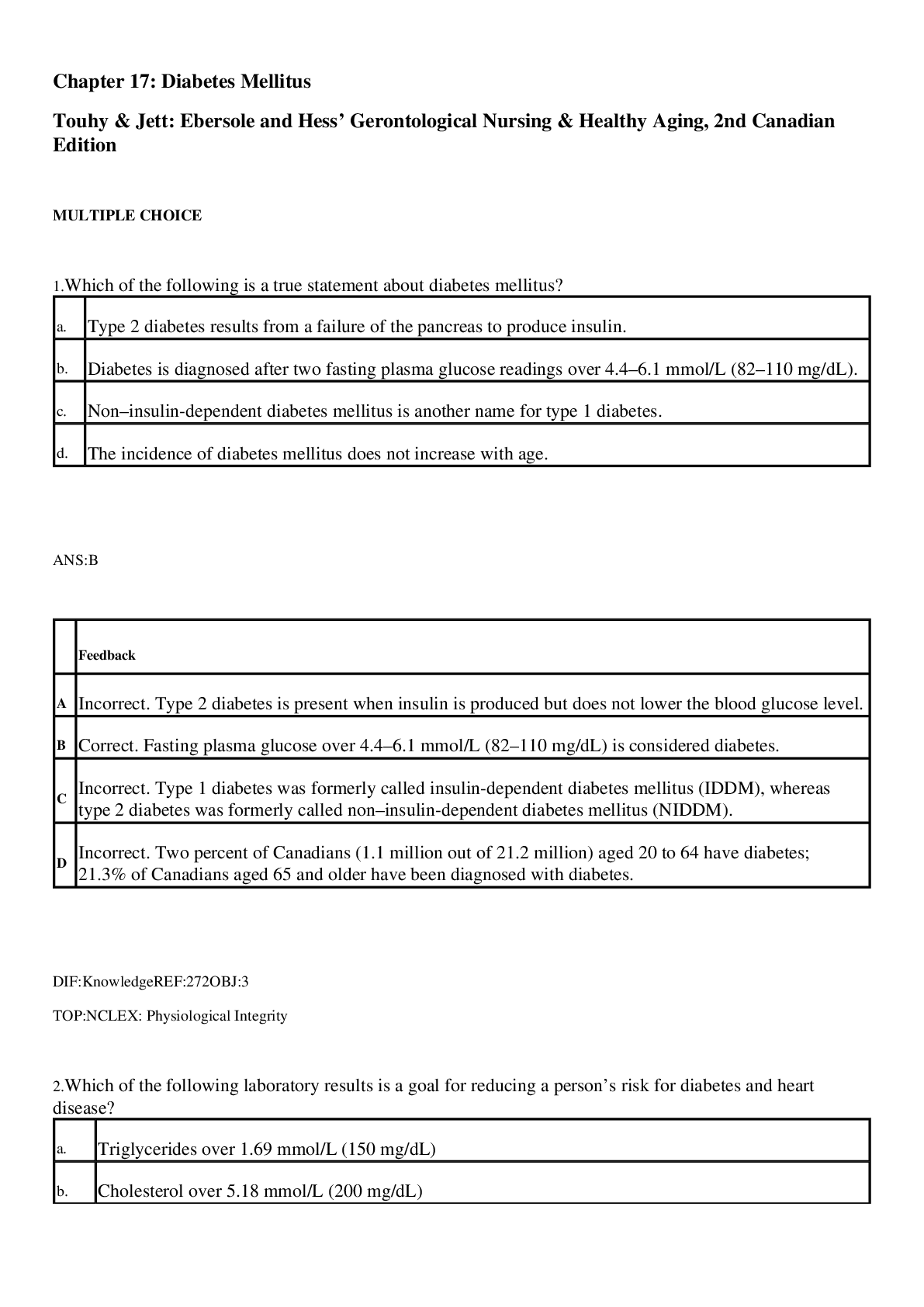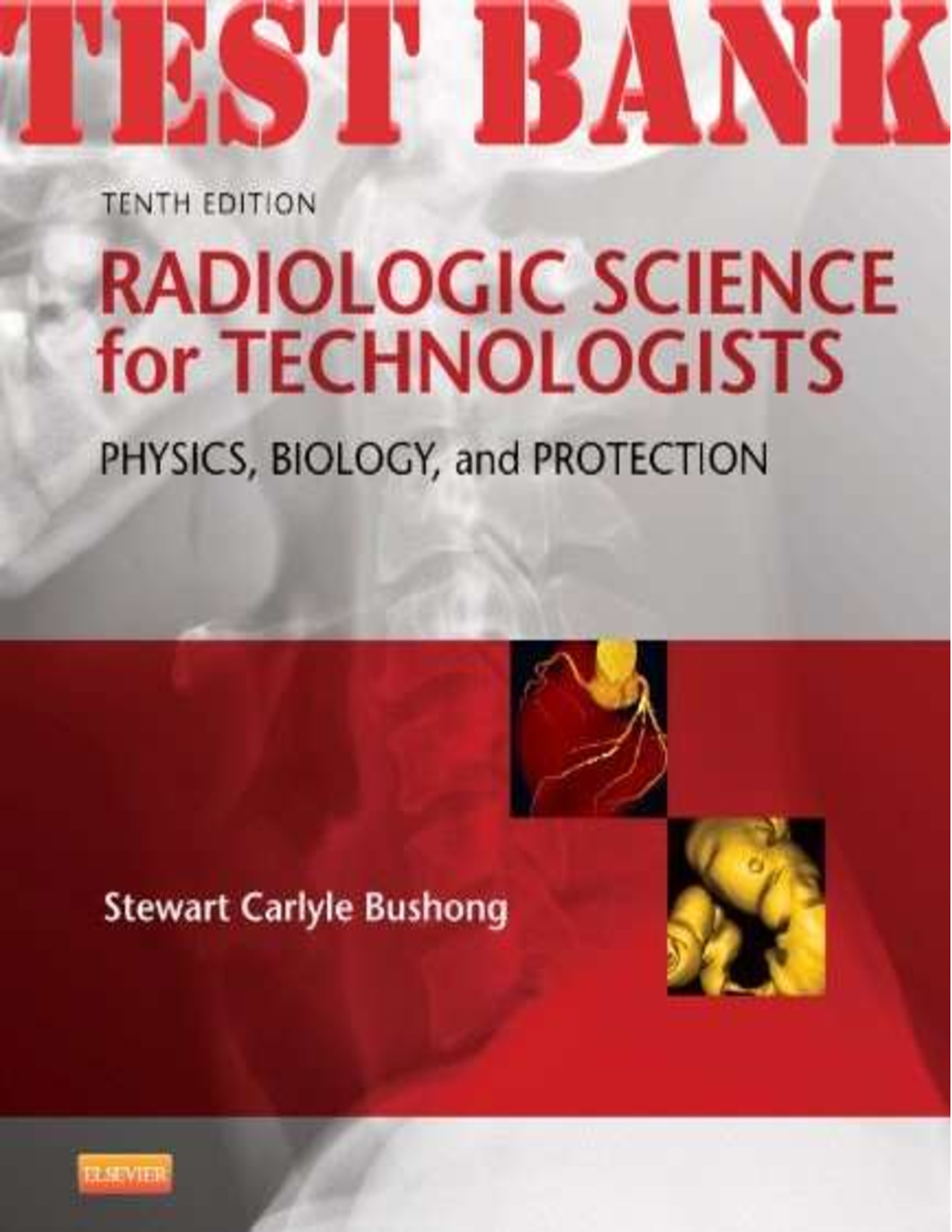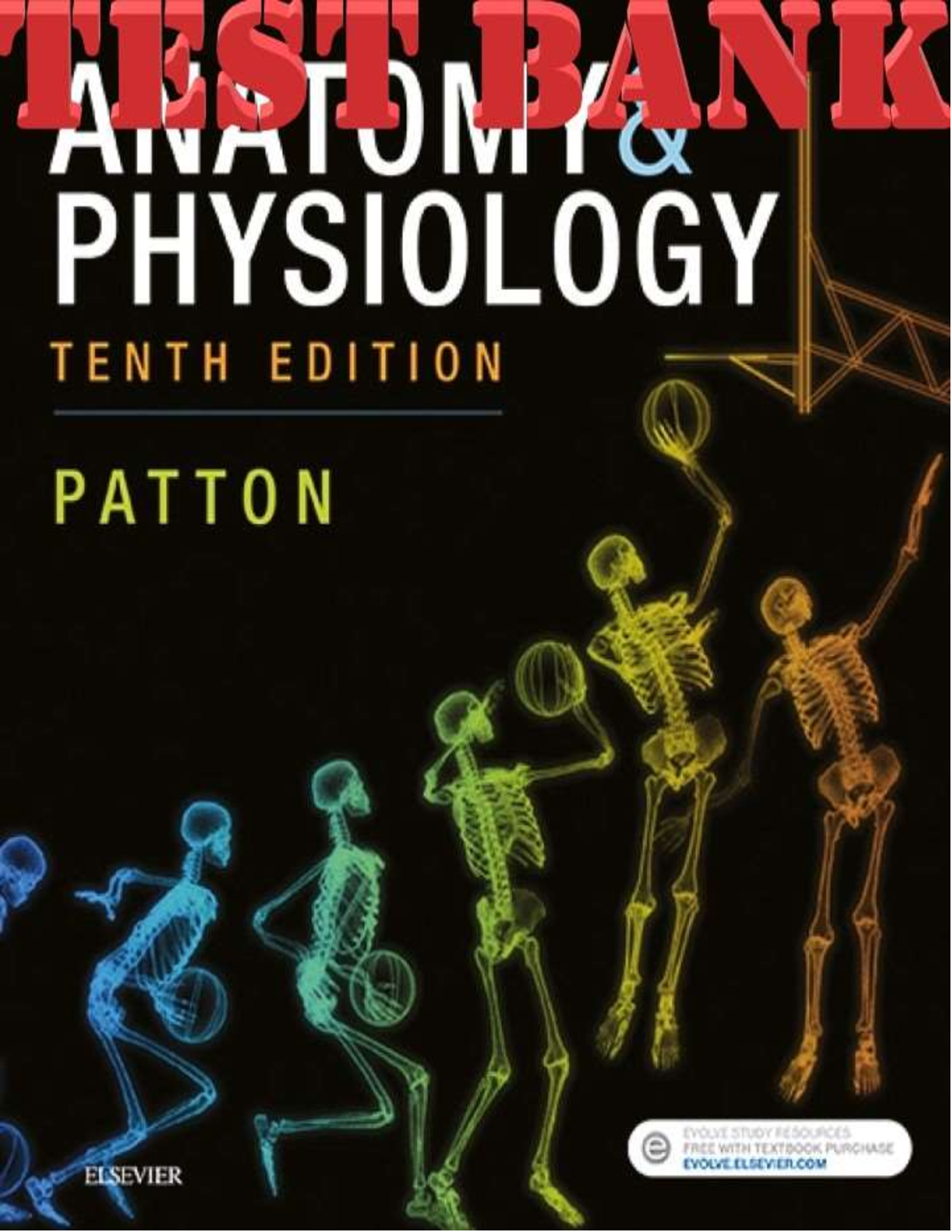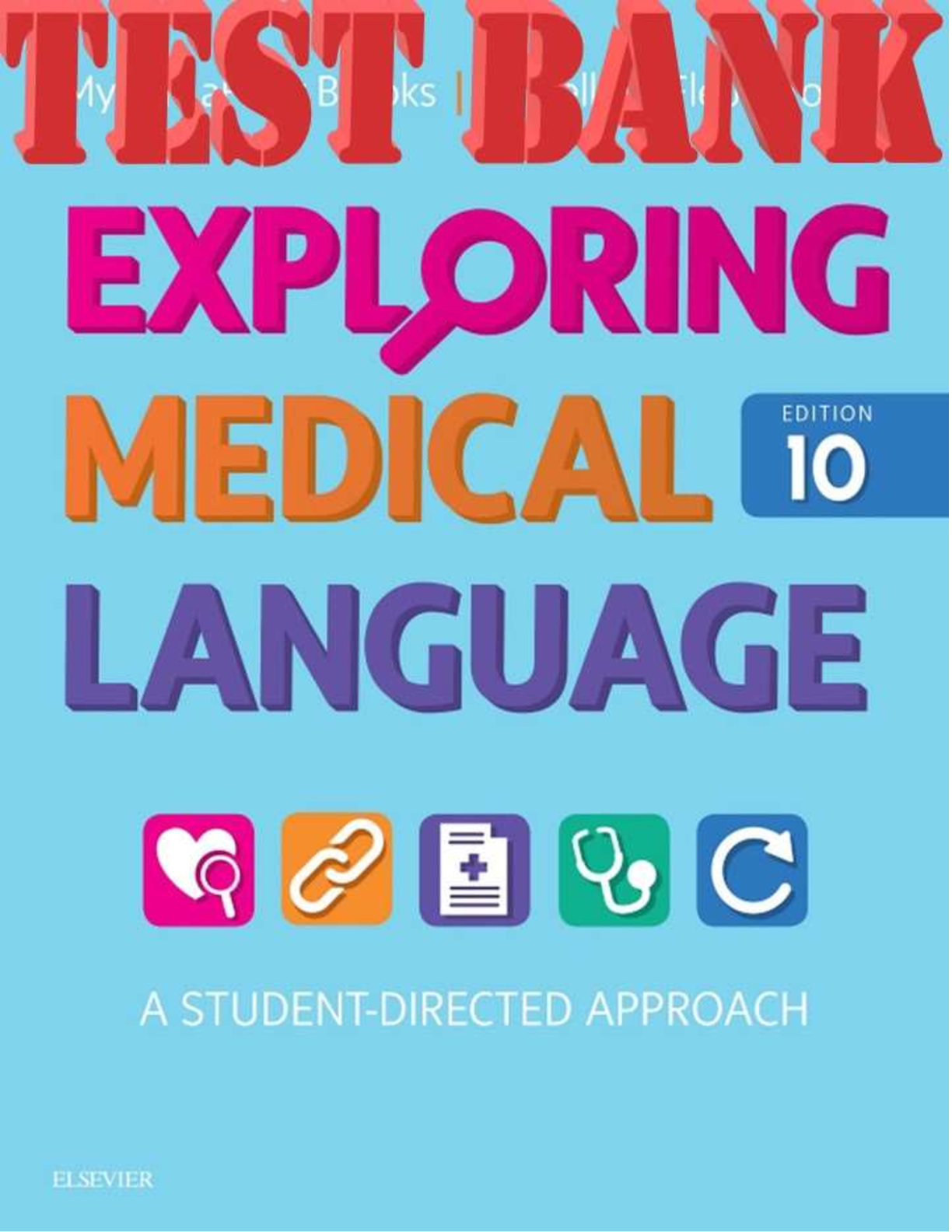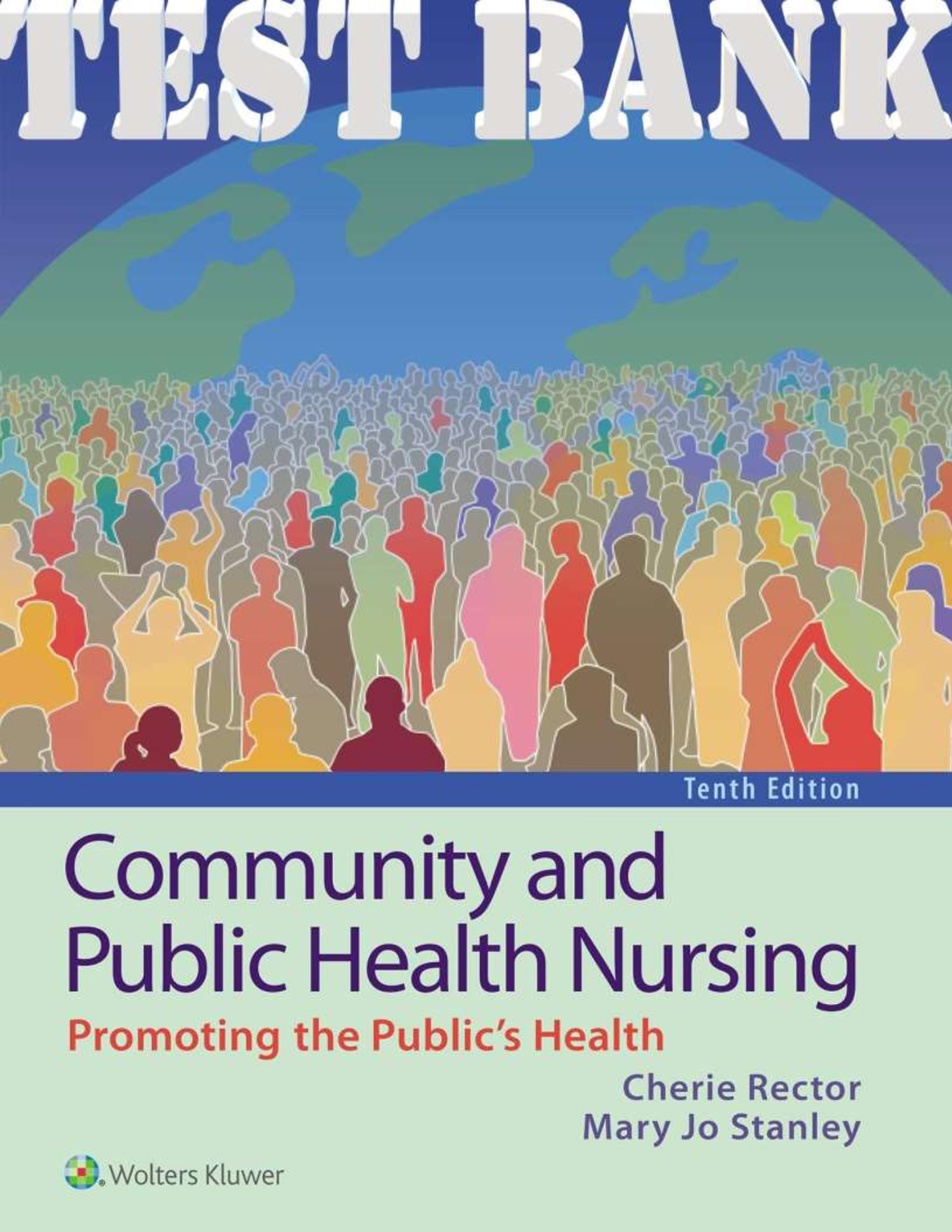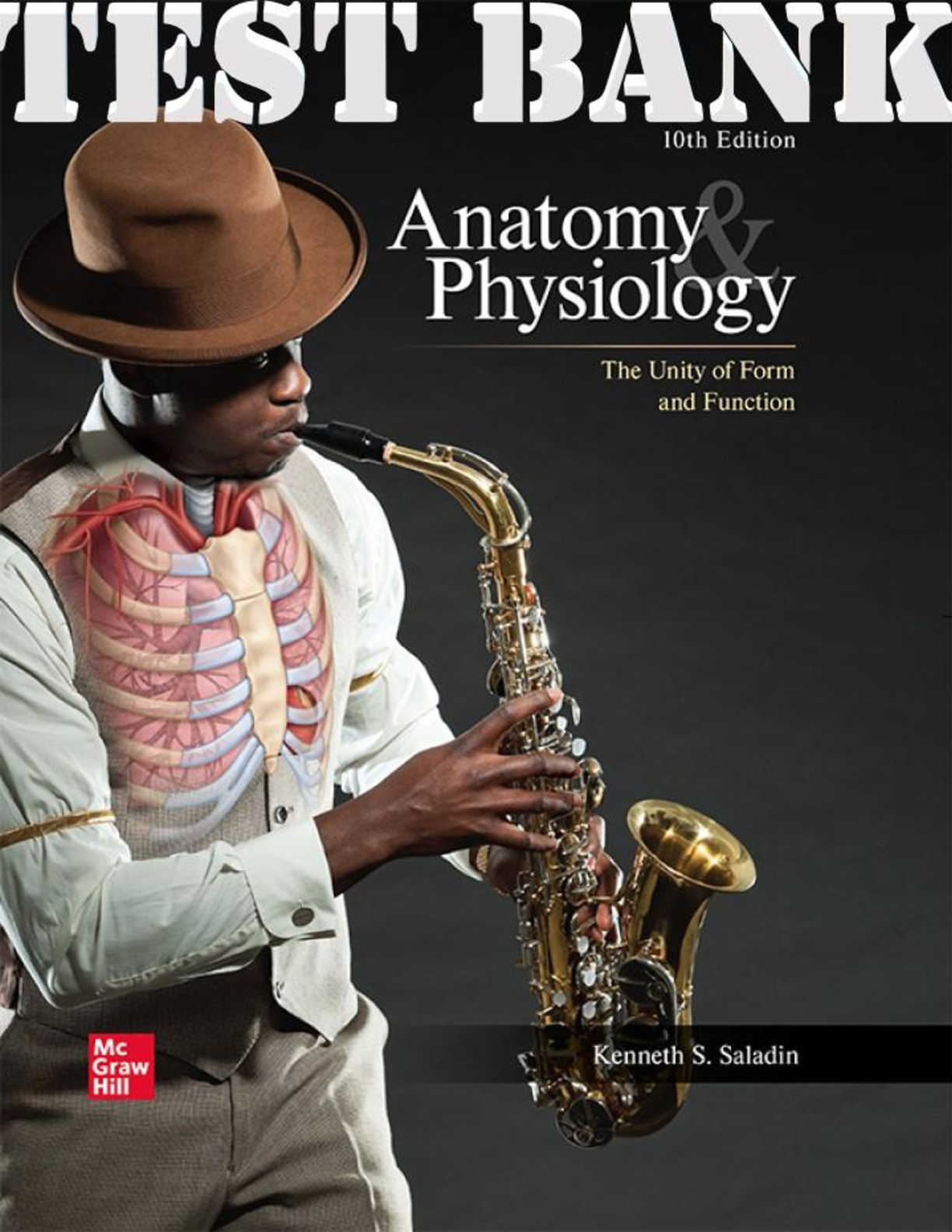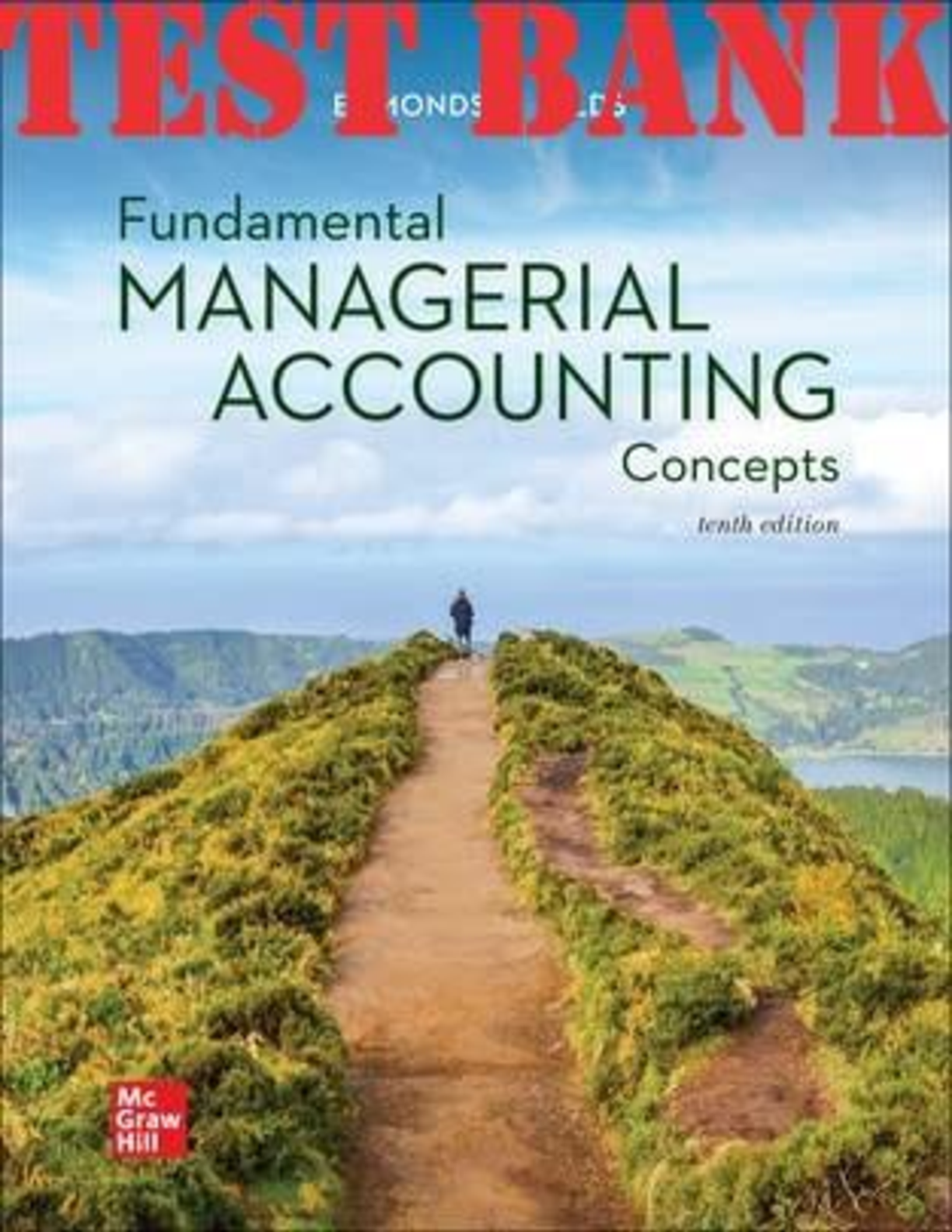*NURSING > TEST BANK > TEST BANK FOR PORTH’S PATHOPHYSIOLOGY 10TH EDITION BY NORRIS CHAPTER 16: Disorders of Brain Functi (All)
TEST BANK FOR PORTH’S PATHOPHYSIOLOGY 10TH EDITION BY NORRIS CHAPTER 16: Disorders of Brain Function
Document Content and Description Below
1. When trying to explain the difference between vasogenic versus cytotoxic cerebral edema, the physiology instructor mentions that cytotoxic edema displays which of the following functions in the bra... in? Select all that apply. A) Impaired blood–brain barrier that allows water/proteins to leave vessels and go into the interstitial space B) Mainly allows edema to form in the white mater of the brain C) May cause herniation by displacing a cerebral hemisphere D) Causes ischemia to build up lactic acid due to anaerobic metabolism E) Allows cells to increase volume to the point of rupture, damaging neighboring cells Ans: D, E Feedback: Cytotoxic edema involves an increase in intracellular fluid. Ischemia results in the inadequate removal of anaerobic metabolic end products such as lactic acid, producing extracellular acidosis. If blood flow is reduced to low levels for extended periods or to extremely low levels for a few minutes, cellular edema can cause the cell membrane to rupture, allowing the escape of intracellular contents into the surrounding extracellular fluid. This leads to damage of neighboring cells. Vasogenic edema occurs with conditions that impair the function of the blood–brain barrier and allow transfer of water and proteins from the vascular into the interstitial space. It occurs primarily in the white matter of the brain, possibly because the white matter is more compliant than the gray matter. Vasogenic edema can result in displacement of a cerebral hemisphere and various types of brain herniation. 2. The intracranial volume that is most capable of compensating for increasing intracranial pressure is the: A) Brain cell tissue B) Intravascular blood C) Surface sulci fluid D) Cerebrospinal fluid Ans: D Feedback: Initial increases in intracranial pressure (ICP) are largely buffered by a translocation of cerebrospinal fluid (CSF) to the spinal subarachnoid space and increased reabsorption of CSF. Of the intracranial volumes, the tissue volume is least capable of undergoing change. Surface sulcus fluid is negligible and not a factor in increased ICP. The compensatory ability of the intravascular blood compartment is also limited by the small amount of blood that is in the cerebral circulation. As the volume-buffering capacity of this compartment becomes exhausted, venous pressure increases and cerebral blood volume and ICP rise. 3. A late indicator of increased intracranial pressure is: A) Tachycardia B) Right-sided heart failure C) Narrow pulse pressure D) High mean arterial pressure Ans: D Feedback: The cerebral perfusion pressure (CPP), which represents the difference between the mean arterial blood pressure (MABP) and the ICP (CPP = MABP – ICP), is the pressure perfusing the brain. CPP (normally 70 to 100 mm Hg) is determined by the pressure gradient between the internal carotid artery and the subarachnoid veins. The MABP and ICP are monitored frequently in persons with brain conditions that increase ICP and impair brain perfusion. When the pressure in the cranial cavity approaches or exceeds the MABP, tissue perfusion becomes inadequate, cellular hypoxia results, and neuronal death may occur. Elevated MABP, wide pulse pressure and reflex, and slowing of the heart rate are important but late indicators of increased ICP. Heart failure, not a part of the reflex, occurs with compression or herniation of the brain stem. 4. A traumatic brain injury client has developed extreme cerebral edema. The nurse is monitoring the client closely for signs of brain herniation. Which clinical manifestations would correlate to upward herniation of the midbrain from the infratentorial compartment? Select all that apply. A) Deep coma B) Rhythmic movement of arms and legs C) Respiratory rate of 8 with intermittent sighs D) Intracranial bleeding from nose and ears E) Bilateral small, fixed pupils Ans: A, C, E Feedback: Infratentorial herniation results from increased pressure in the infratentorial compartment. Herniation may occur superiorly (upward) through the tentorial incisura or inferiorly (downward) through the foramen magnum. The most prominent signs of upward herniation include immediate onset of deep coma; small equal, fixed pupils; and abnormal respirations (slow rate with intermittent sighs or ataxia) and other vital signs. Downward displacement of the midbrain through the tentorial notch or of the cerebellar tonsils through the foramen magnum can interfere with medullary functioning and cause cardiac or respiratory arrest. Tissue infarction and intracranial bleeding are causes of cerebral edema, rather than an outcome of herniation. Rhythmic movement of arms and legs could be caused by many things and is not specific to infratentorial herniation. [Show More]
Last updated: 1 year ago
Preview 1 out of 14 pages
Buy this document to get the full access instantly
Instant Download Access after purchase
Add to cartInstant download
We Accept:

Also available in bundle (1)

TEST BANK FOR PORTH’S PATHOPHYSIOLOGY 10TH EDITION BY NORRIS ALL CHAPTERS
THIS PAPER CONSISTS OF ALL CHAPTERS
By GoldenA 3 years ago
$24
44
Reviews( 0 )
$4.50
Document information
Connected school, study & course
About the document
Uploaded On
Mar 01, 2021
Number of pages
14
Written in
Additional information
This document has been written for:
Uploaded
Mar 01, 2021
Downloads
1
Views
104


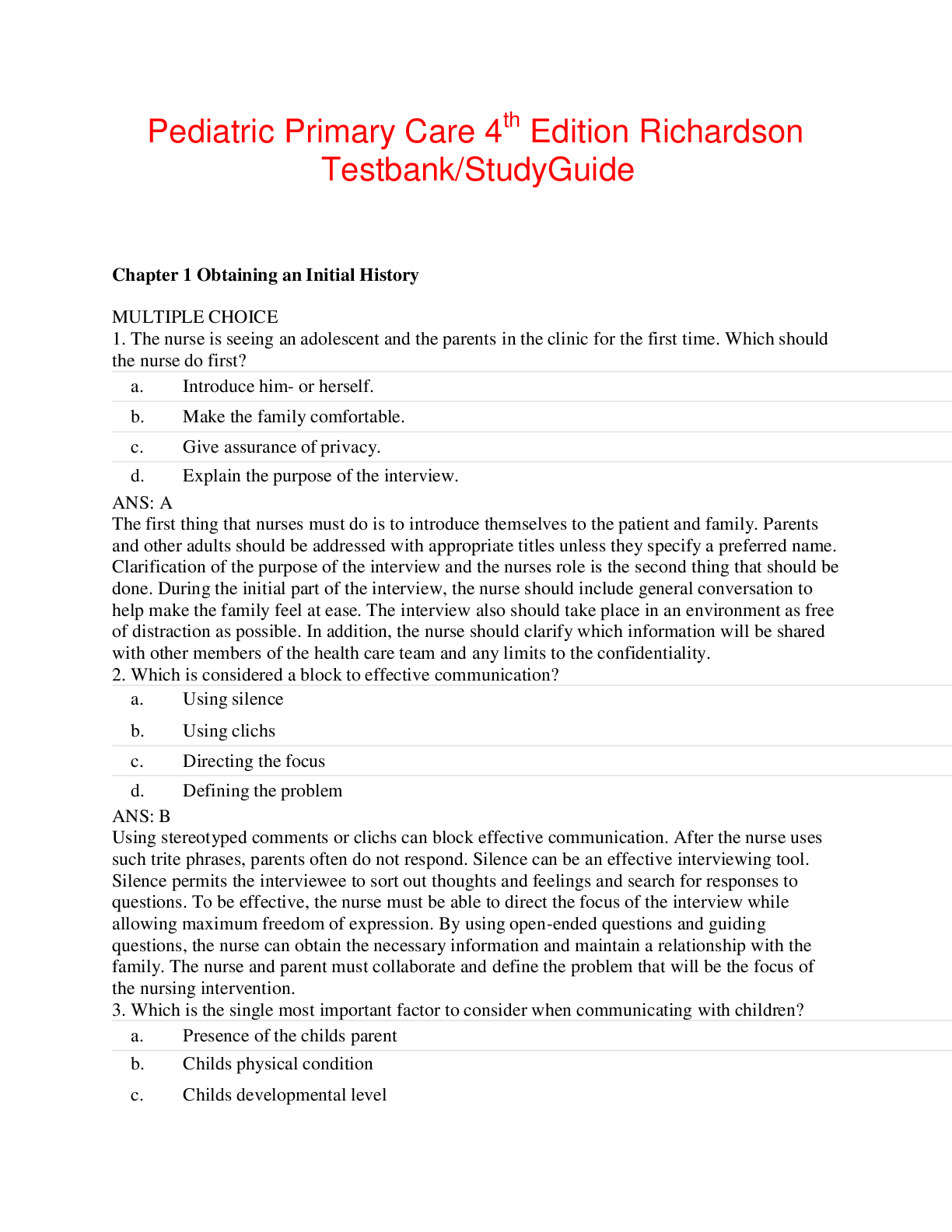

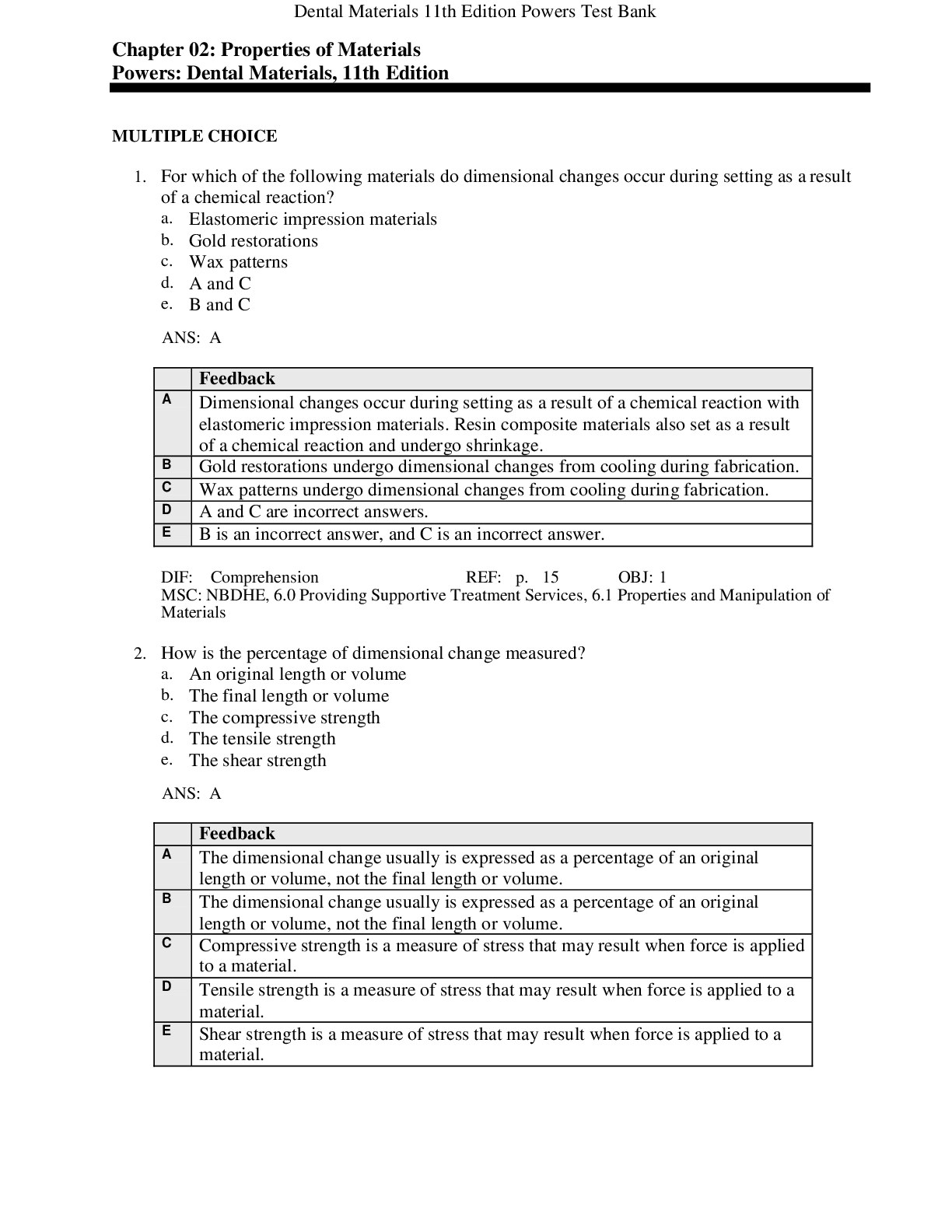
.png)
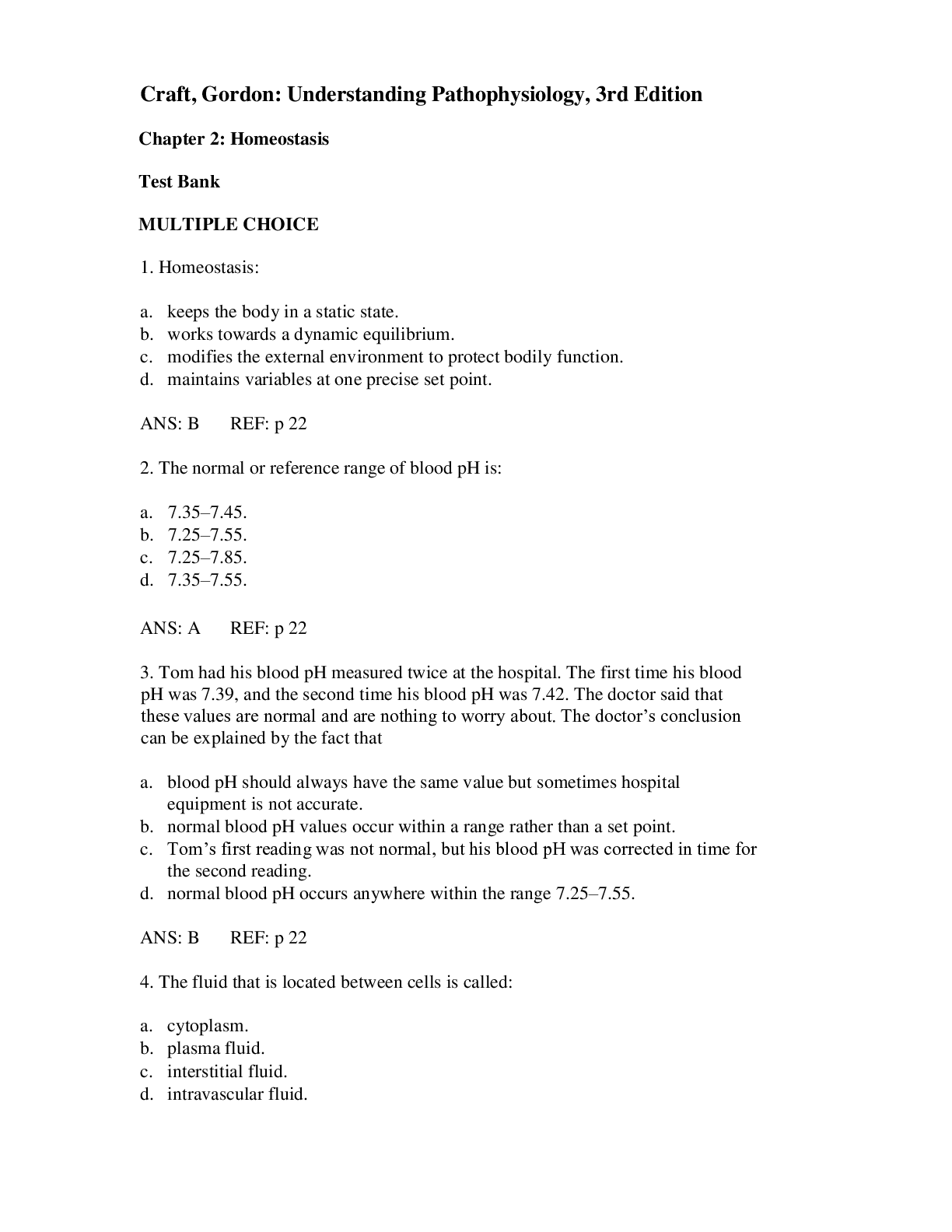



.png)
.png)
